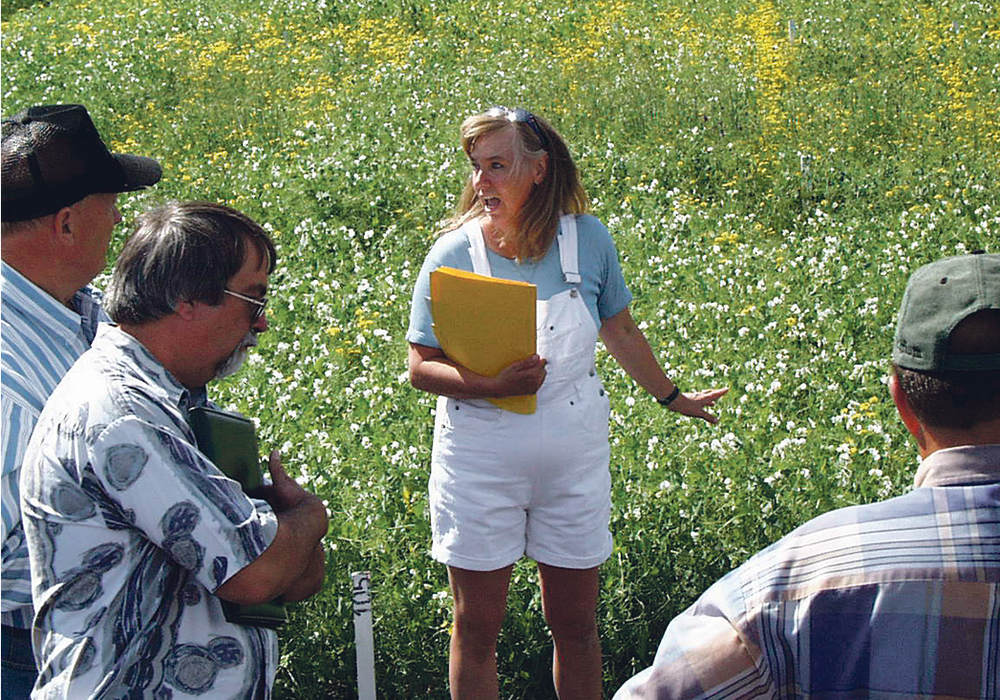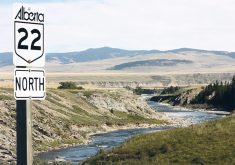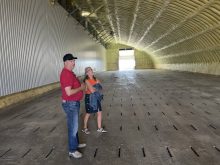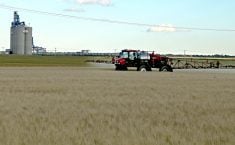Kirsty Ross, who was recently awarded for her efforts, is credited for helping build the crop in northeastern Alberta from virtually nothing
When northeastern Alberta field pea trials first began in the mid 1980s, Kirsty Ross would use any tool she could find to grow the crop.
Ross, a district agriculturalist with the province at the time, said she was initially inoculating with portable cement mixers.
“We were just throwing rhizobia. We would say, ‘is that enough?’ We didn’t know,” she said.
“It was a lot of trial and error. It wasn’t perfect but at least it was a visual, figuring out what things looked like, and what (did) and what didn’t work.”
Read Also

New coal mine proposal met with old concerns
A smaller version of the previously rejected Grassy Mountain coal mine project in Crowsnest Pass is back on the table, and the Livingstone Landowners Group continues to voice concerns about the environmental risks.
But her trials eventually paid off — peas are now widely grown in the region.
Ross has been recognized by farmers for her efforts in growing the industry.
During the Alberta Pulse Growers Commission annual general meeting at FarmTech Jan. 30, she was given the Alberta Pulse Innovator Industry award.
While Ross is humbled to receive the award, she said she wouldn’t have been able to expand the industry without the help of farmers and other key players.
“The real innovators, the growers, they began to put acres of field peas on their farms,” she said, adding she and others later launched a grower group to bring in expertise and navigate challenges.
“We all shared each other’s stories about what we were doing, what was going wrong and what was going right. Together we learned about this crop.”
She joked about the times when they were trialing nine-foot trapper peas, which had vines that wrapped around everything.
“People were looking at me like I was nuts,” she said. “They would say, ‘what? I’m not growing this thing up here.’ ”
She said farmers also shuddered when the crop would curl up after being sprayed with herbicides.
“They would go, ‘what are you doing?’ But I said it’s going to come up, and they did. They were able to harvest them.”
At the time, she said it was initially thought that the crop would work well for feeding the many hog and cattle operations in the area.
But after further research, she and others realized there was lots of market potential for human consumption.
“My mantra has always been increasing revenue at the farmgate,” she said.
Luckily, she said, the St. Paul, Alta., seed cleaning plant was willing to come on board.
She said the plant cleaned the peas, bagged, colour-sorted and loaded them on producer cars, becoming strong marketers of the crop.
It also loaned her land behind the plant so she could further advance trials.
“We had some growers that put in acres-worth, so they are the ones that went out there and they did it,” she said. “They were excited because it was something new.”
Ross later became a provincial pulse specialist. She also had better trial equipment and varieties to work with.
“It was a great journey with a lot of dedication from the innovators out there,” she said.
“I’m so proud to see where this pulse industry has gone.”


















